Clark School
Introduction
Text-to-speech Audio
“The wealthy, and the poor (are) all finding inducements enough in the rich groves and prairies of the west, to make them forsake their old friends and old homes, determined to enjoy the luxuriance which nature has here presented their views and possession.” - Danville Enquirer, December 6, 1834.
This site of a former one-room schoolhouse not only tells a story of early public education, but also tells a story of why early settlers to the Salt Fork region loved this area they called home.
Images
Clark School (c. 1900)
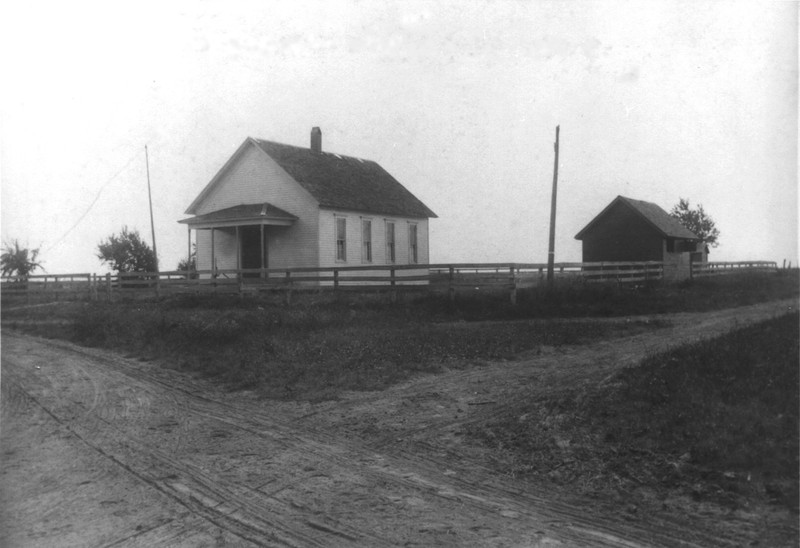
Clark School Class Photo (c. 1900)
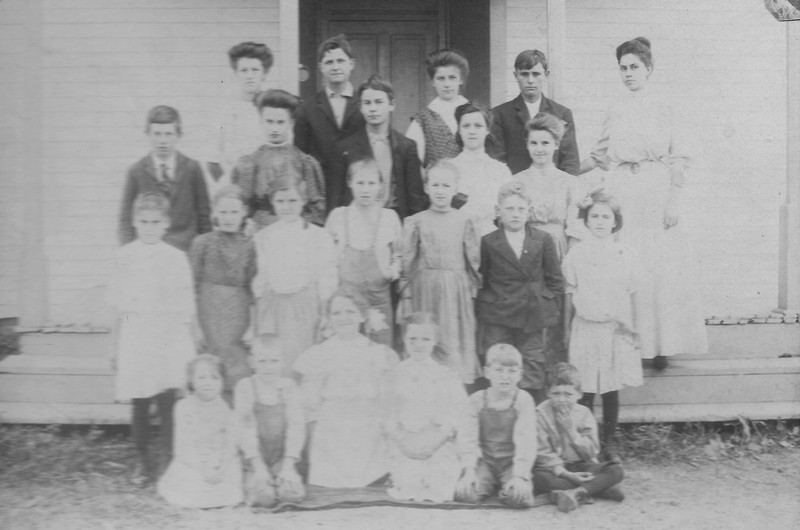
Clark School Directory (c. 1909)
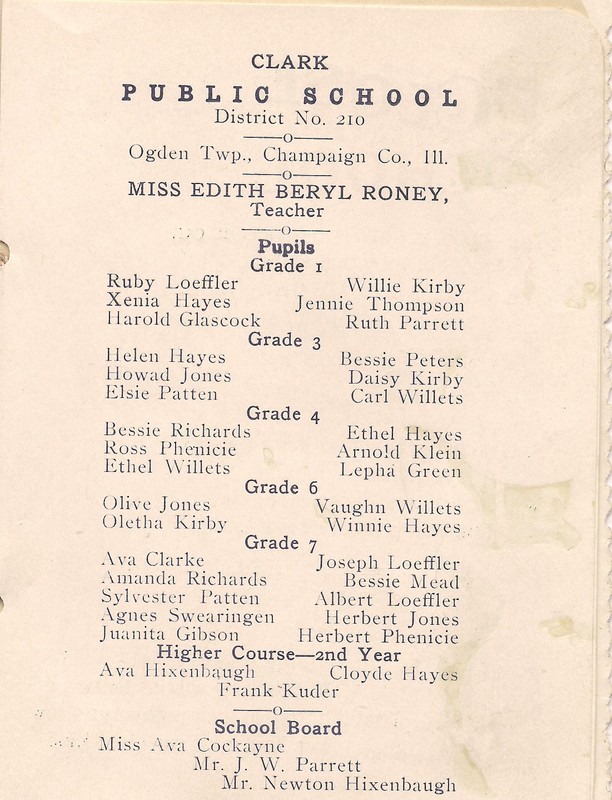
Map of Early Salt Fork Settlement
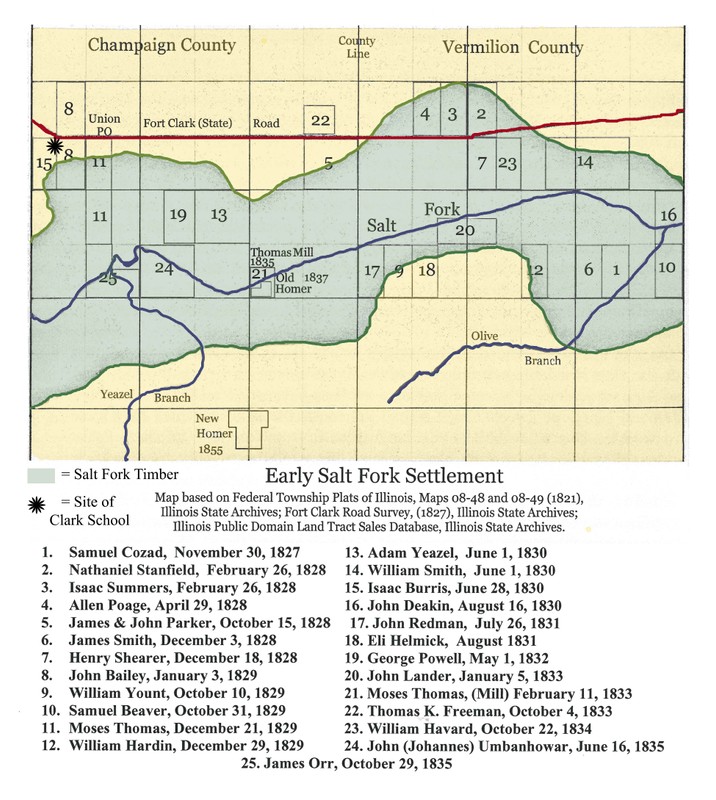
Henry Asa Coffeen, Wyoming Congressman from 1893-1895 and former teacher at Clark School prior to his time in Congress
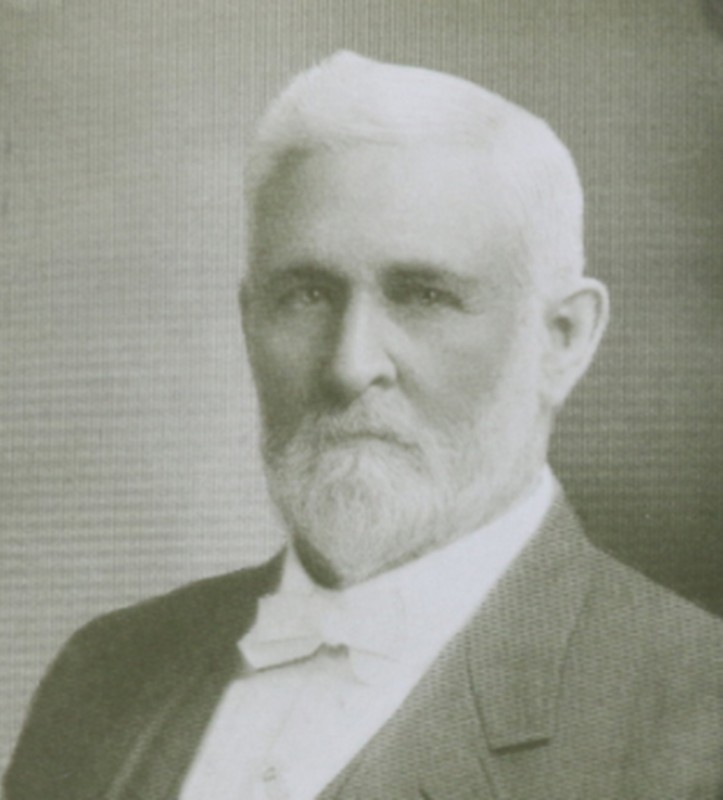
Charles Tinkham, Civil War Veteran and former teacher at Clark School
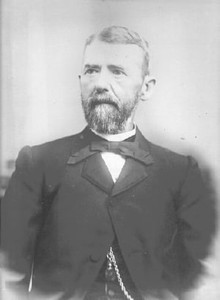
Backstory and Context
Text-to-speech Audio
Champaign County was formerly established in 1833. One of the many areas of the county that drew large groups of early Euroamerican settlers included areas near the Salt Fork River due to the large amount of available timber. One such settler included William G. "Uncle Billy" Clark. Clark and his family settled near this sign in the early 1840s. Soon after, George Clark and other family members moved to the area and by the beginning of the 20th century, seven or eight Clark families called this area home.
With a significant population of settlers calling this area home, a public schoolhouse known as Clark School was established on this corner in 1856, one year after public schools were established in 1855. Much like other one-room schools in the area, teachers at these schools generally remained for only one or two years before moving on to another school. Young single women from area towns such as St. Joseph, Sidney, and Homer were most often hired to teach here, however, women who were married to Homer men also taught at Clark School as well. Some of the educators who formerly taught at Clark School included Mary Burkhardt, Mrs. Emma Thornton, Clara Wilson Dees, Miss Beryl Roney, Etta Colson, and Edith Wilson. A handful of men were also known to have taught at Clark School, including Charles Tinkham, a Civil War veteran, and Henry Asa Coffeen, an eventual congressman from Wyoming. By the year 1900, Clark School was one of 200 schoolhouses in Champaign County educating young students.
Similar to other one-room schools in the area, Clark School served as a community gathering place for more than just education. Scout groups, the County Improvement Club, and agricultural groups used the building to meet. On Sundays when school was not in session, Clark School was used by church groups for formal services as well as Sunday School. By the year 1900, Clark School was one 200 schoolhouses in operation in Champaign County serving it's community in a variety of ways.
School consolidation began in 1948 and forced the closure of many area one-room schools. Clark School, however, remained open until 1951 when it's doors were ultimately closed to students and teachers. The school building stood all the way until the 1960s after it was eventually torn down. To honor the memory of this memorable piece of their childhood, former students of Clark School held annual reunions in this location for decades following it's removal.
Sources
Champaign County Forest Preserve District, Early Settlers and the Clark School, Homer Lake Rd, Homer, IL, 2021.
Cunningham, Ray and Molly Schoaf, From the Timber to the Prairie, A History of Homer Illinois (Homer: Homer Historical Society, 2005).
Kemp, Bill, “One-Room Schoolhouses Dotted Central Illinois,” The Pantagraph, May 24, 2008. https://pantagraph.com/news/one-room-schoolhouses-dotted-central-illinois/article_60a5a0fe-6b07-5034-8f57-9620b638f69c.html.
Museum of the Grand Prairie, Books, Bells, and Inkwells: Experiences of the One-Room School, Lake of the Woods Forest Preserve, Mahomet, IL, 2006.
One Room Schools of Champaign County, The Urbana Free Library Digital Collections, Urbana, IL, 2014. Accessed April, 2, 2022. https://www.flickr.com/photos/98945443@N05/albums/72157646588271269.
University of Illinois Library, “One Room Schools Map, Champaign County, 1915-1916,” Digital Collections at University of Illinois Library, accessed April 2, 2022. https://digital.library.illinois.edu/items/714526f0-f563-0134-23e3-0050569601ca-0#?c=0&m=0&s=0&cv=0&r=0&xywh=713%2C1500%2C2115%2C1000.
Homer Historical Society
Homer Historical Society
"From the Timber to the Prairie: A History of Homer Illinois" - Book by Ray Cunningham and Molly Shoaf
"From the Timber to the Prairie: A History of Homer Illinois" - Book by Ray Cunningham and Molly Shoaf
"From the Timber to the Prairie: A History of Homer Illinois" - Book by Ray Cunningham and Molly Shoaf
